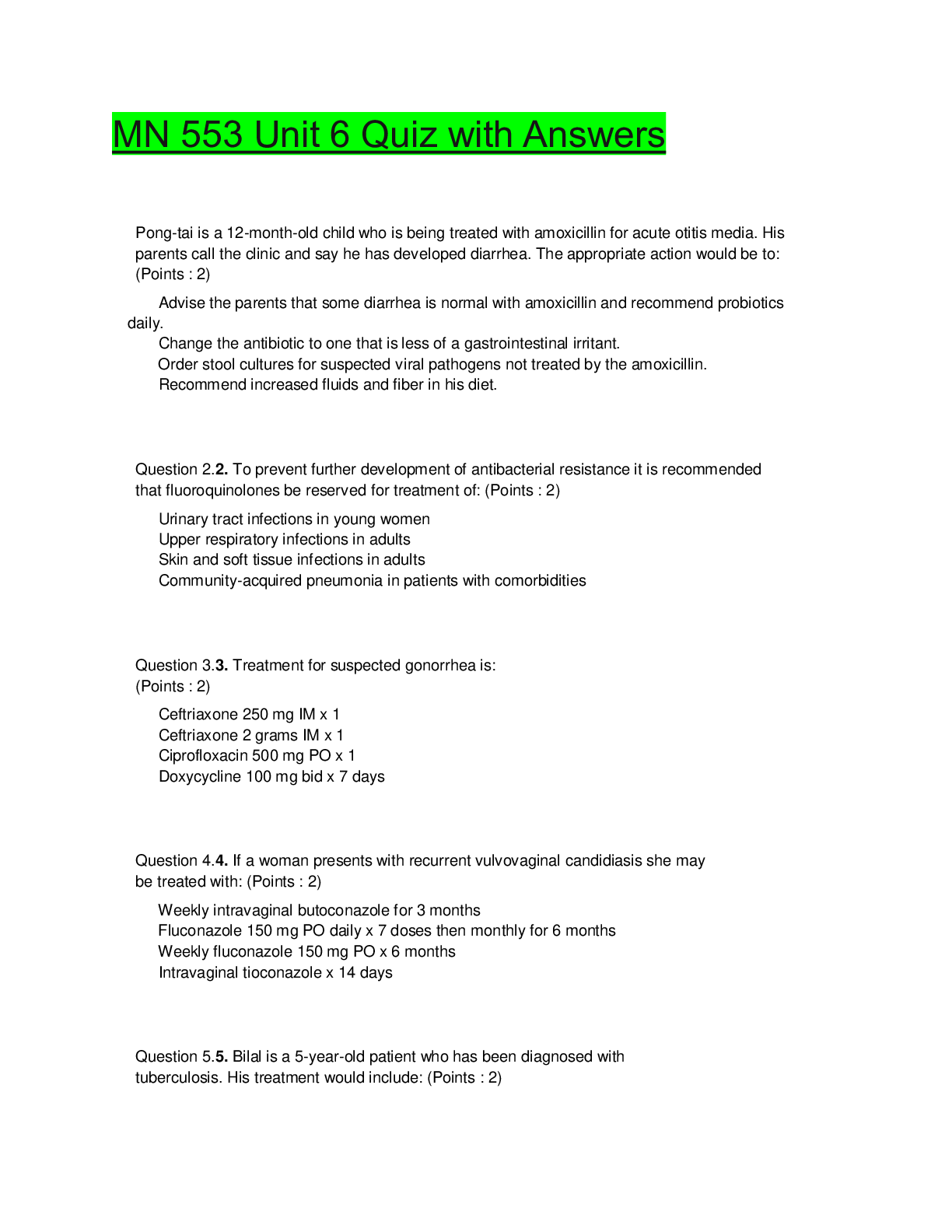*NURSING > QUESTIONS & ANSWERS > Module 1 Quiz with correct answers (All)
Module 1 Quiz with correct answers
Document Content and Description Below
Module 1 Quiz 1. How many chapters are in ICD-10-CM? 2. The coder should locate the main term in the tabular list? 3. Conditions that are routinely associated with a disease process, the symptoms o... r signs should not be assigned as an additional code unless otherwise instructed by the classification. 4. What is the maximum number of characters and ICD-10-CM code can have? 5. An example of a main term used in the Alphabetic Index to Diseases is: 6. When certain diseases or conditions require mandatory multiple coding and the second code appears in slanted brackets, the first code identifies the underlying condition and the second code identifies what fact about the disease or condition? 7. In the UHDDS definitions, the difference between a “complication” and “comorbidity” is that a comorbidity is a/an _____ (one word) condition. 8. What follows some main terms in the Alphabetic Index to Diseases that affect the selection of an appropriate code? 9. Code R63.8 requires the assignment of an additional code for BMI? 10. Verifying the code found in the alphabetic index is optional? 11. sign the correct ICD-10-CM code for: Micro calcifications found on mammogram; possible neoplasm of breast. 12. What are the main terms used in the ICD-10-CM Alphabetic Index to access the symptom and abnormal finding codes? 13. An example of a main term used in the Alphabetic Index to Disease is: 14. The two codes, Z00.00 and Z00.01, used to describe a patient’s encounter for a general adult medical examination are different based on what fact about the patient? 15. The UHDDS data set is a minimum, common core of data on patients collected on patients from all of the following types of health care settings except which type: 16. A series of terms in parentheses that sometimes directly follow main terms, as well as sub terms, are known as: 17. If the same condition is described as both acute and chronic and separate subentries exist in the Alphabetic Index at the same indentation level, code both and sequence the chronic code first. 18. Z79.2 is the correct ICD-10-CM code for: Patient on long-term anticoagulant therapy. 19. Z01.810 is the correct ICD-10-CM code for: Preoperative cardiovascular examination. 20. What is the complete description of the abbreviation ICD-10-CM? 21. Z codes are diagnosis codes and represent reasons. 22. The MS-DRG assignment determines how much the hospital will be reimbursed? 23. Which of the following is a true statement about the Z codes in chapter 21 of ICD-10-CM? 24. The default code is listed next to the main term in the Alphabetic Index. 25. Z32.02 is the correct ICD-10-CM code for: Encounter for pregnancy test, negative result. 26. E codes are diagnosis codes and represent reasons for the encounter or visit. The codes are used for circumstances other than a disease or injury that are the reason for the health care services. 27. According to the ICD-10-CM coding guidelines for the assignment of the principal diagnosis, what would be the principal diagnosis when the physician documents the final diagnosis of the inpatient admission as: “Nausea, vomiting due to viral enteritis with resulting dehydration” 28. What is the definition of principal diagnosis? 29. The term “and” should be interpreted as “and” or “or”. 30. annual changes to the Medicare inpatient prospective payment system become effective on what date each year? 31. The MS-DRG assignment is based on: 32. According to the ICD-10-CM coding guidelines for the assignment of the principal diagnosis, what would be the principal diagnosis when the physician documents the final diagnosis of the inpatient admission as: “Abdominal pain and fever due to appendicitis” 33. Select all uses of coded data. 34. According to the ICD-10-CM coding guidelines for the assignment of the first listed diagnosis, what would be the principal diagnosis when the physician documents the final diagnosis of a physician office visit as: “Probable pneumonia with fever, cough and shortness of breath” 35. Assign the correct ICD-10-CM code(s) for: Burning and tingling sensation of toes 36. Which of the following would be an example of the ICD-10-CM coding guideline that states that conditions that are NOT an integral part of a disease process should be coded when present? 37. The following organizations make up the Cooperating Parties for ICD-10-CM: 38. Medical necessity supports the concept that procedures are only reimbursed as a covered benefit when they performed for a specific diagnosis or specified frequency 39. …………………………………………………. [Show More]
Last updated: 1 year ago
Preview 1 out of 3 pages
Instant download

Buy this document to get the full access instantly
Instant Download Access after purchase
Add to cartInstant download
Reviews( 0 )
Document information
Connected school, study & course
About the document
Uploaded On
Jan 16, 2021
Number of pages
3
Written in
Additional information
This document has been written for:
Uploaded
Jan 16, 2021
Downloads
0
Views
48

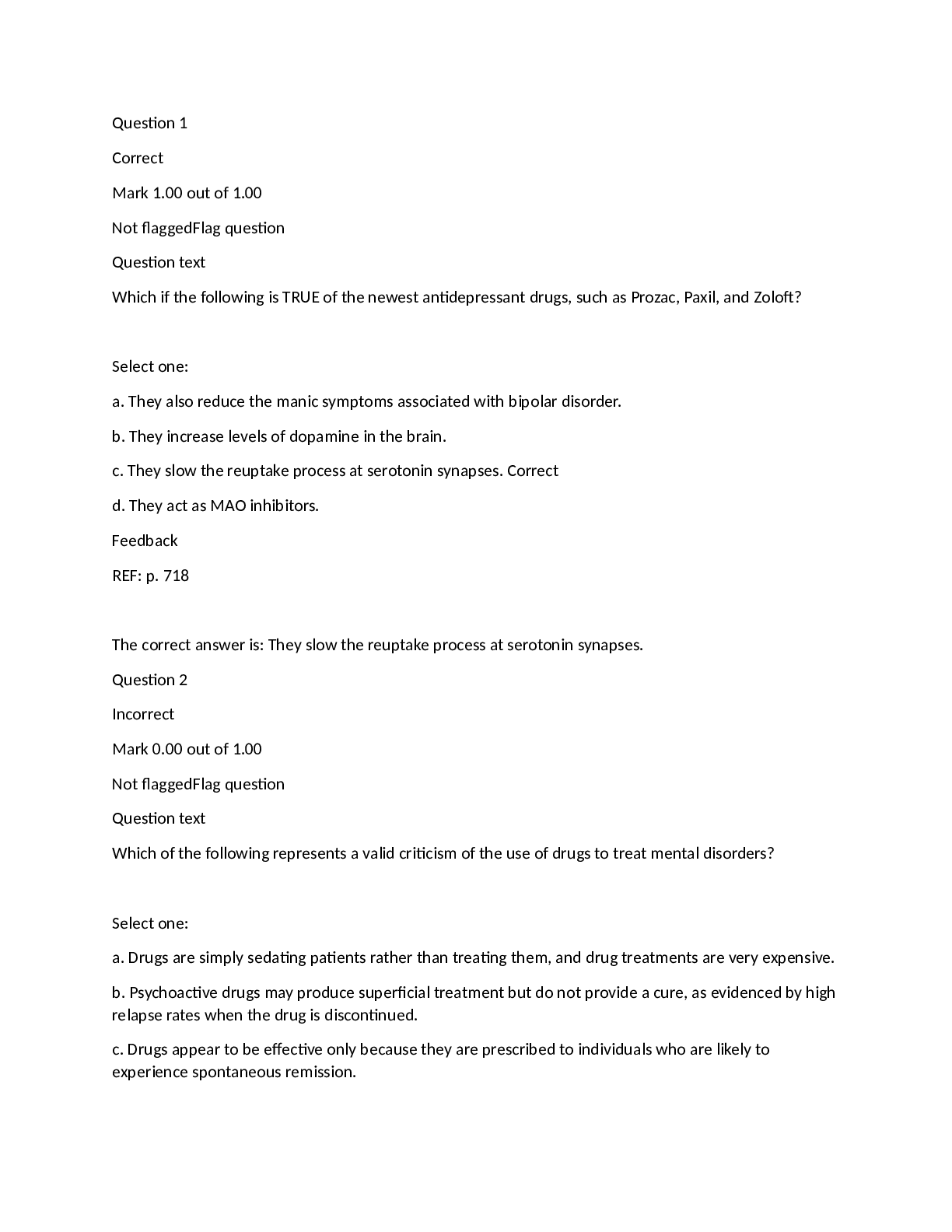
.png)

.png)




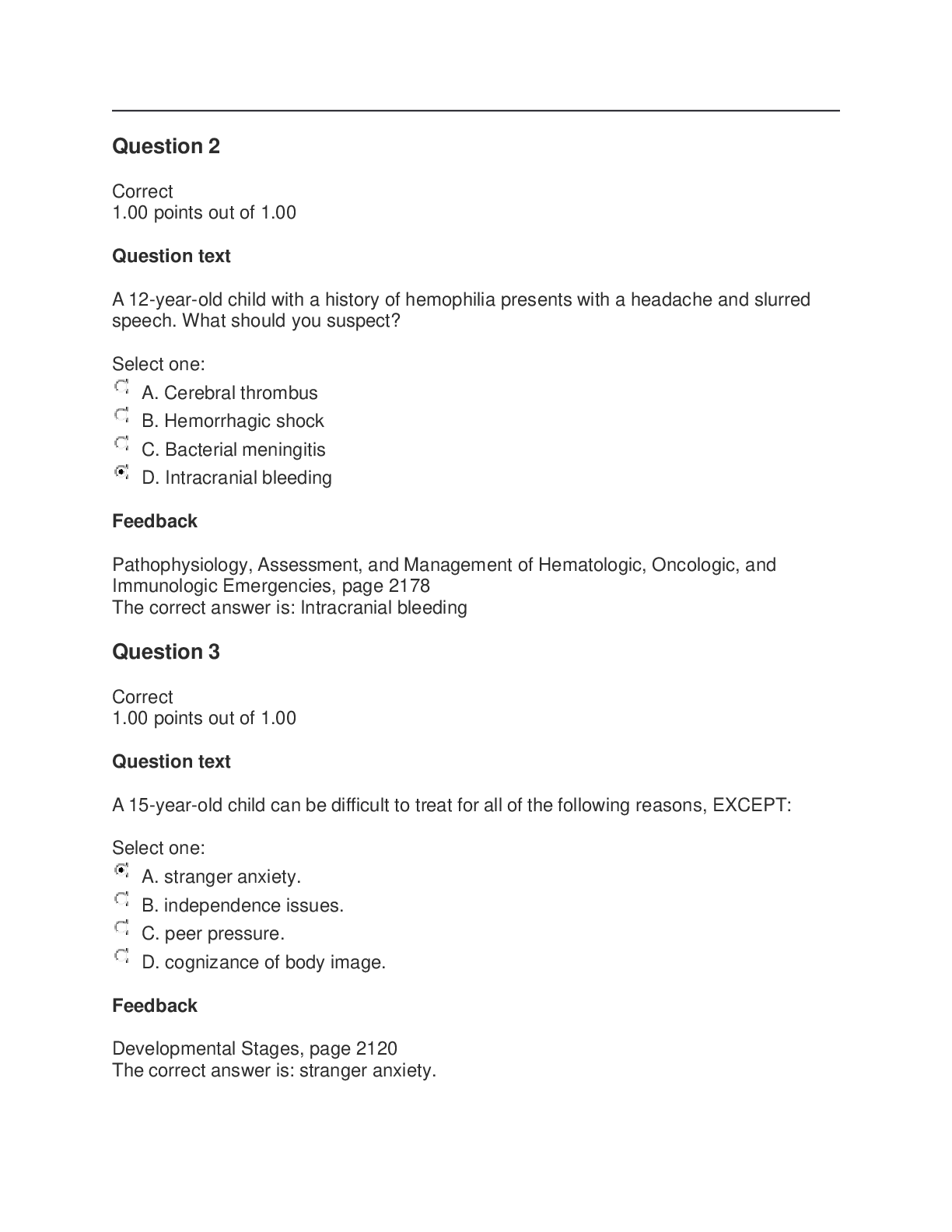
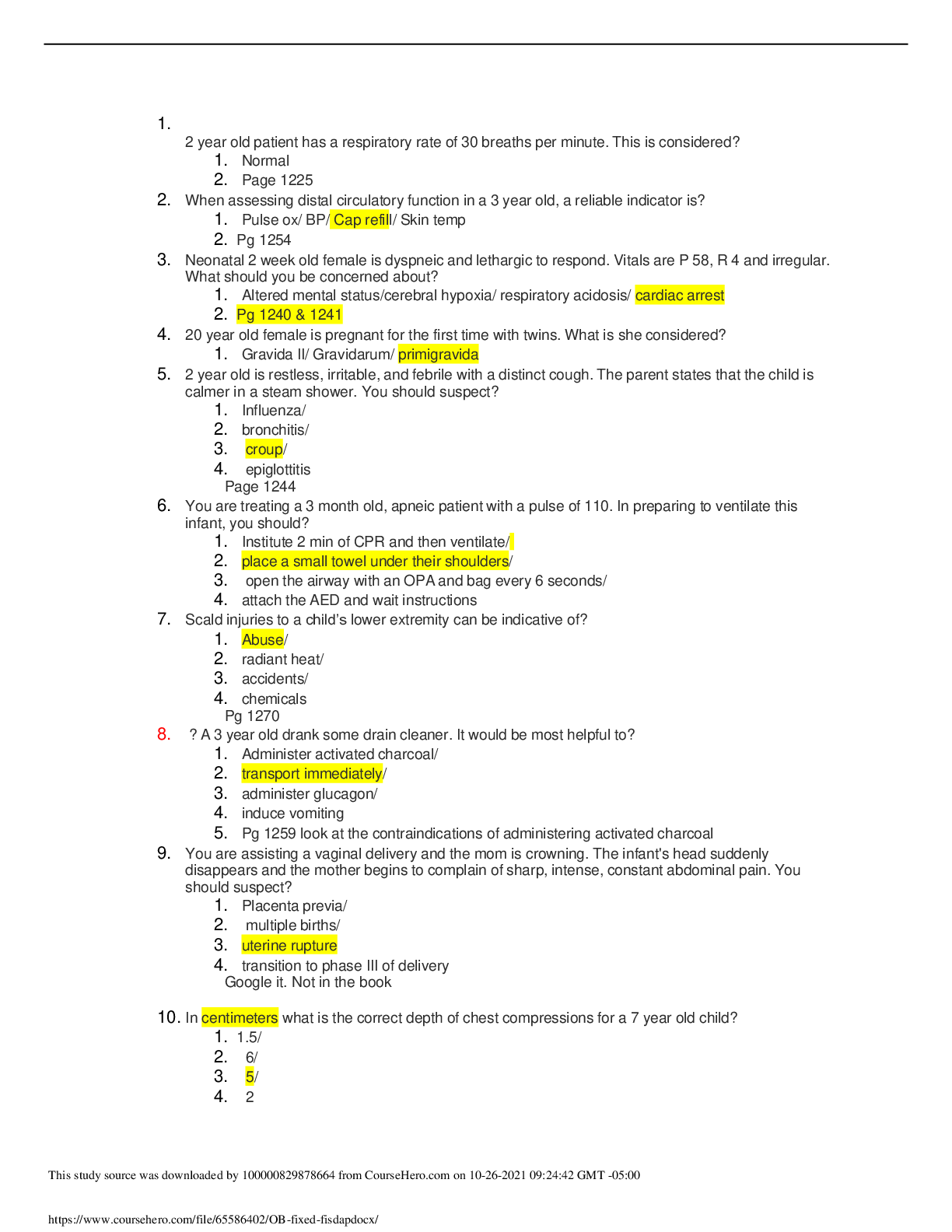
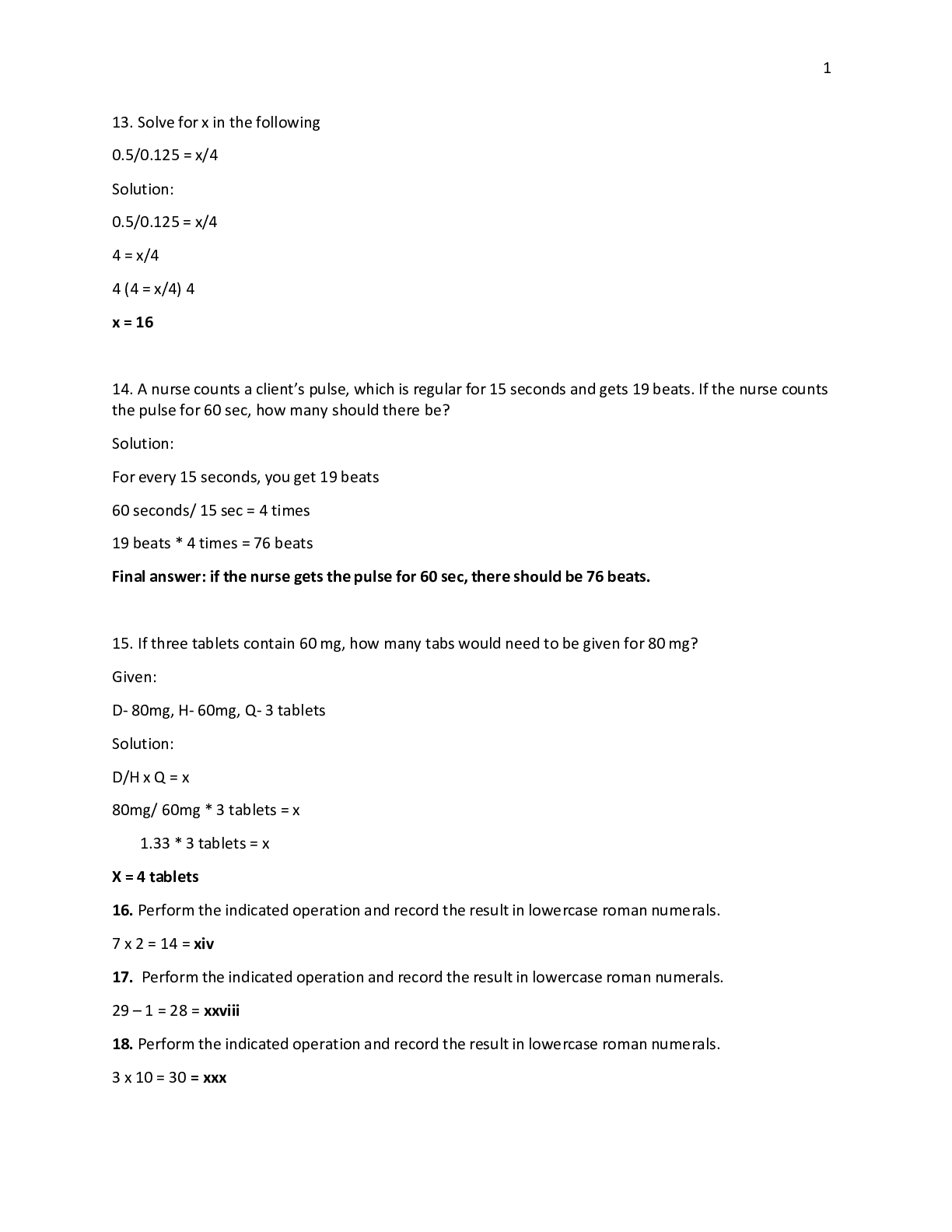


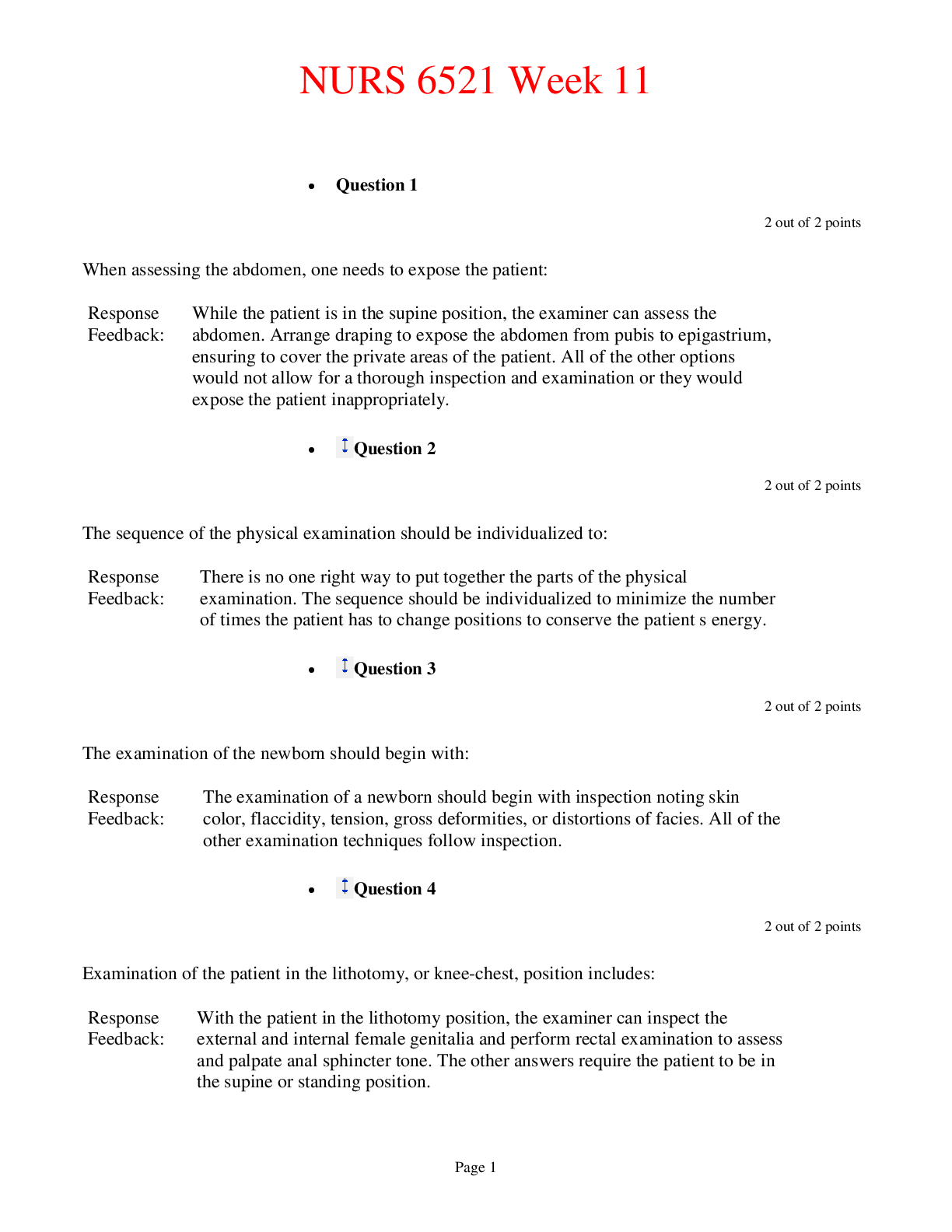



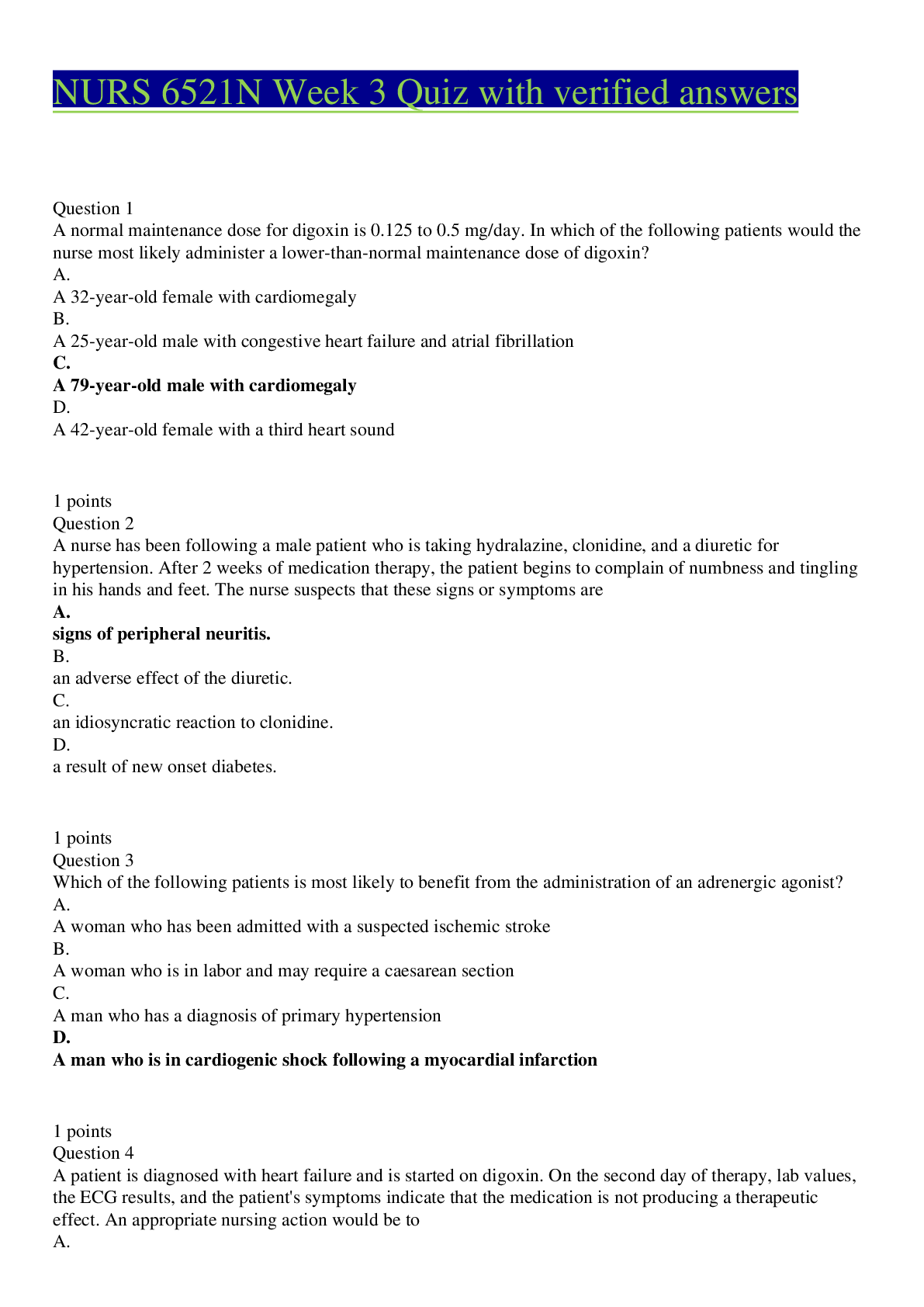


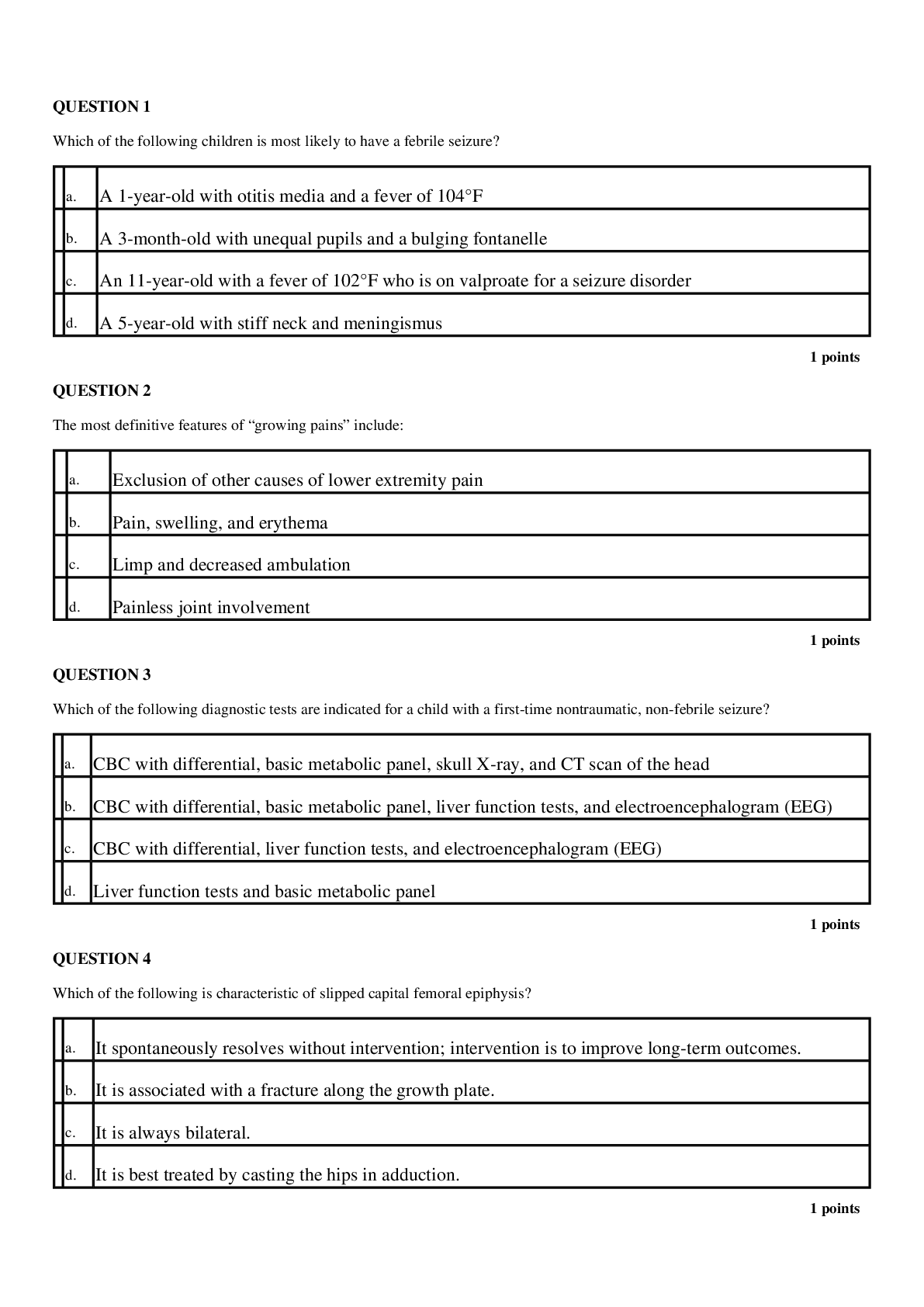

.png)
